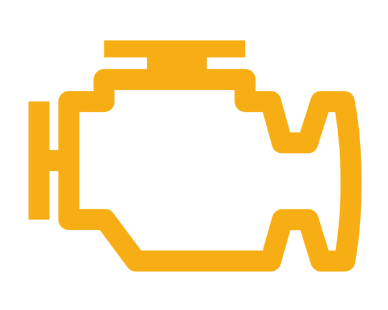
As we mentioned in our video on Monitors, it's important to remember that fault codes aren’t just caused by 'out of range' values (outside of the normal operating parameters) but can also be caused by implausible relationships.
Feedback Tests & Fault Criteria
In order to accurately re-create a fault, it's important to understand the conditions that are required in order for a system to set and clear a given fault code. Unfortunately, this isn't always provided in technical repair data and different manufacturers run different strategies to carry out the same tests.
For example, to check that a canister purge system is functioning correctly, most manufacturers watch for a signal change in the fuel tank pressure sensor whilst Chrysler watch for a switch to close in the ESIM (Evap System Integrity Module)
If you are unable to attain concrete information relating to the way a system self-tests, you can often reverse engineer these strategies by analysing the manufacturer diagnostic flow chart. The test procedures will often relate directly to the components that the system uses to self test.
The second part to this is understanding the difference between enable criteria and fault criteria.

Check Engine Light - Why and When?
If a fault in an engine management system is likely to raise emissions more than 50% above the legal permissible limits, the vehicle must turn the check engine light on. For 2-Trip codes, the check engine light is illuminated on the second consecutive failure.
If the check engine light is flashing, it means that the emissions fault that is present is so bad it may cause the catylitic converter to melt.
It's important to note that only the misfire and fuel trim monitors can cause the check engine light to flash.
Other than clearing fault codes, the check engine light will turn itself off if the monitor that failed runs and passes 3 times consecutively. It is important to recognise that this does not mean cycling the ignition or running the engine 3 times, but rather that the conditions have been met where that monitor can perform three complete cycles. This may take 10 drives for example and will all depend on the monitor used to set the fault code. Even after this has occurred and the check light has extinguished, this does not mean the fault code is erased.
Whilst in most instances 3 drive cycles is enough to turn off the check engine light, it generally takes 40 trips for a monitor to run and then clear the fault code. For a fault that has caused the check engine light to flash as mentioned above, this will take twice the amount of trips (80)

The Power of Generic Diagnostics
In some cases, strangely enough we can actually gain more insight into a fault through generic diagnostics. Take some GM applications for example where enhanced diagnostics identify a misfire as P0300 (Random Misfire Detected) and generic diagnostics actually identify which cylinder the misfire is on (P0301 - Cylinder 1 Misfire Detected)
The lesson here...
Never say always and never say never. There are so many different protocols, tooling and variations in this industry to hang your hat on one test peice of information or result. The foolproof solution is to check everything; scan all control units, poll different control unit versions if necessary and try another scan tool in doubt etc.
Similar Conditions Window
In many circumstances an ECU will record the conditions under which a monitor failed and then tighten up those conditions to scrutinise the fault.
For example, some Chrysler applications will zone in to within about 350rpm and <5% of the original failure point and ensure the system runs correctly within this finite range in order to self-clear the fault code. This is all in the interests of not allowing emissions violations slip through the net.
Let's say we had a misfire monitor pick up a misfire at 5000rpm and log a fault code, however the misfire monitor is able to run and complete it's test without reaching this engine speed again. In this case, there is a fault (misfire) present, but the fault code can self-clear without it being rectified.
So to prevent this from happening, the ECU must ensure that the engine must again reach 5000rpm to scrutinise for misfires before clearing the codes.
Just to make things more confusing...
As we just mentioned, an ECU can change the failure thresholds to scrutinise whether or not a fault is resolved but there is another reason these failure thresholds may change: because the ECU decides it wants to.
An ECU can purposefully make decisions to change the failure thresholds in order to pass or fail a test, so it can move on to the next test it needs to complete. This is purely down to the programming of the control unit and this information is almost never attainable and at the end of the day, is it really going to help you? Probably not, but it's good to understand the logic behind how a system works while working through diagnosis processes.
Do you have something to add to this article?
Send us an e-mail at: [email protected]